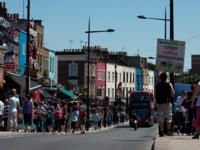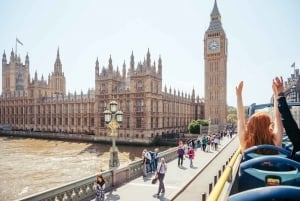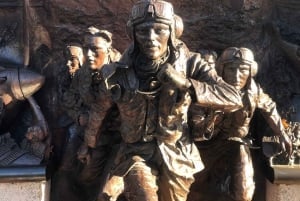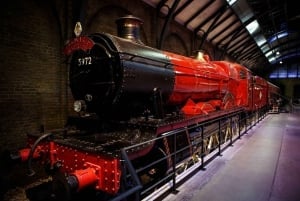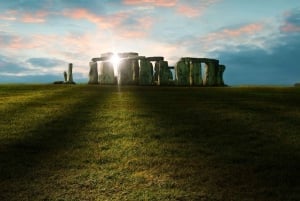North London
North of the capital is home to a tapestry of diversity with the likes of the varied parklands in pretty Primrose Hill and Hampstead with its glorious patch of heathland serving as the perfect spot for relaxation and recreation. Then there're the notable sporting venues, Wembley Stadium and Lord's cricket ground. Here you can watch cricket's most famous tournament, The Ashes or, at Wembley, the FA Cup Final. Otherwise, this area of London provides quality examples of the city's multiculturalism as well as awesome nightlife.
King's Cross
A once salacious part of town Kings Cross has undergone some serious regeneration from the 1990s until the present day until it resembles a destination in its own right. The British Library has made its home here, as have many bars and coffee shops at the foot of Kings Cross Road. However, this area is by no means gentrified and much remains in industrial use and studio space. Often there is still the old Kings Cross visible beneath the veneer. The Eurostar Terminal opened here in 2007 disgorging French businessmen, and Central St Martins Art School moved here in the summer of 2011, so expect to see more and more arty types replacing the shadier inhabitants of the area.
Tube: King's Cross St. Pancras
Camden
An eclectic hub of alternative music, fashion and culture, Camden Town is the capital’s difficult teenager that refuses to grow up. Camden Market and Stables Market are a seething mass of European tourists in the day, wiling the day away with a heady brew of chicken chow mein and lager by the canal side. Many pubs thrive here amongst the former piano factories and warehouses, though you’re best heading to the hinterlands of the tourist epicentre for the better drinking holes. The Roundhouse on Chalk Farm Road is a cultural hub of live music theatre. Regent’s Park and London Zoo are just a short walk away.
Tube: Belize Park
Wembley
Best known as the location of England’s national stadium, Wembley Stadium, re-built in 2007. The Stadium hosts up to 90,000 football fans and is also host to major music events.
Tube: Wembley Park
Islington
Islington has matured from its petty bourgeois beginnings, through a period of urban decay in the mid-century, and then has settled into a versatile and mixed area. The present day Islington represents the best in London and is truncated between Camden to the west and Hackney to the east, with Upper Street as its gentrified backbone for nightlife and date night restaurants. Islington is ultimately a very mixed area, with numerous cultural institutions and fringe theatres and also one of the best places to buy antiques, in Camden Passage. The City Workers from Clerkenwell settle in Saddlers Wells, while to the north you’ll find the proud home of Arsenal Football Club at the imposing Emirates Stadium, and Finsbury Park Mosque with its large Muslim community.
Tube: Old Street
Hampstead
A smart, residential area of north London, with all the amenities you would expect, Hampstead also boasts the stunning Hampstead Heath with some of the best views of the city and some notable museums such as Keats House Museum and Kenwood House.
Tube: Hampstead
Epitomising the ‘urban village’, this fashionable area just to the north of central London offers stunning views over it. Just up the hill from London Zoo, it is known as somewhat of an enclosure for some very well-known faces.
Tube: Chalk Farm
St John’s Wood
A mini suburb, just a stone’s throw from central London, St John’s Wood also homes Lord’s Cricket Ground and the iconic Abbey Road, immortalised by The Beatles and still a prolific recording studio. Little Venice at the confluence of the Grand Union and Regent's Canals is home to a houseboat community and cafes.
Tube: St. John's Wood
Hackney
In the last decade Hackney became home first to the artist and then the wannabe artists and much of it is resolutely gentrified. Also homing Rows de Beauvoir Town’s leafy terraces and some loft and warehouse conversions. Broadway Market on a Saturday heightens the easy clash of cultures, with arty types and musicians mingling through the busy street shoulder-to-shoulder with families buying their pricey, organic humous and handmade tortellini. Most of London’s most popular nightlife could begin and end in Hackney; start off at pub on Mare Street, then hit a warehouse rave, then blag your way into a student or artist’s studio space until the wee hours.
Tube: Whitechapel Station
Barnet
Tube: Cockfosters
Kilburn
Home to a high concentration of London’s Irish population as well as The Tricycle Theatre, Kilburn’s High Road is a surprising offering in an otherwise fairly standard high street setting.
Tube: West Hampstead
Clerkenwell
Located barely north of The City, part of the Roman Wall is visible from Clerkenwell, it maintains the look of a small village, complete with a ‘green’ at its centre, which is populated like many a British village: with some good pubs. Despite appearances, many of the properties are commercial as it has become a hub for architecture and design.
Tube: Barbican
Crouch End
An area of family-friendly cool, Crouch End is one of the off-the-tube-map residential havens, maintaining a pretty town feel whilst boasting a good range of amenities, restaurants and shops.
Tube: Highgate


